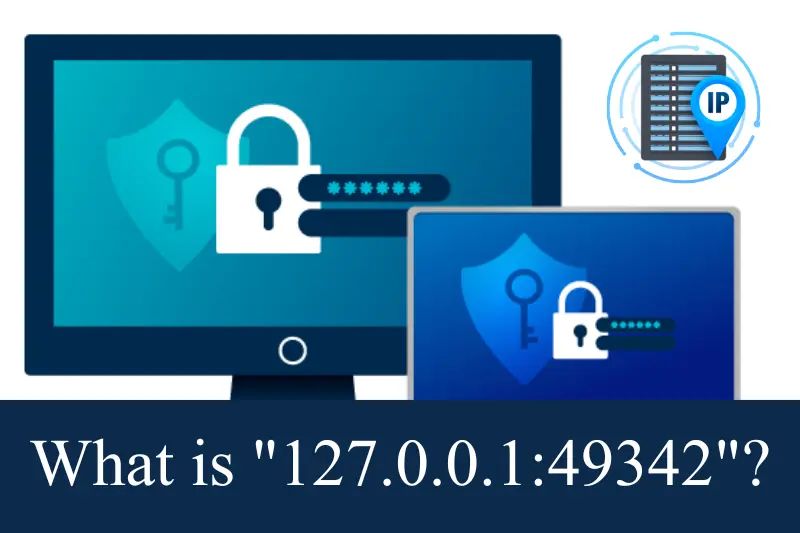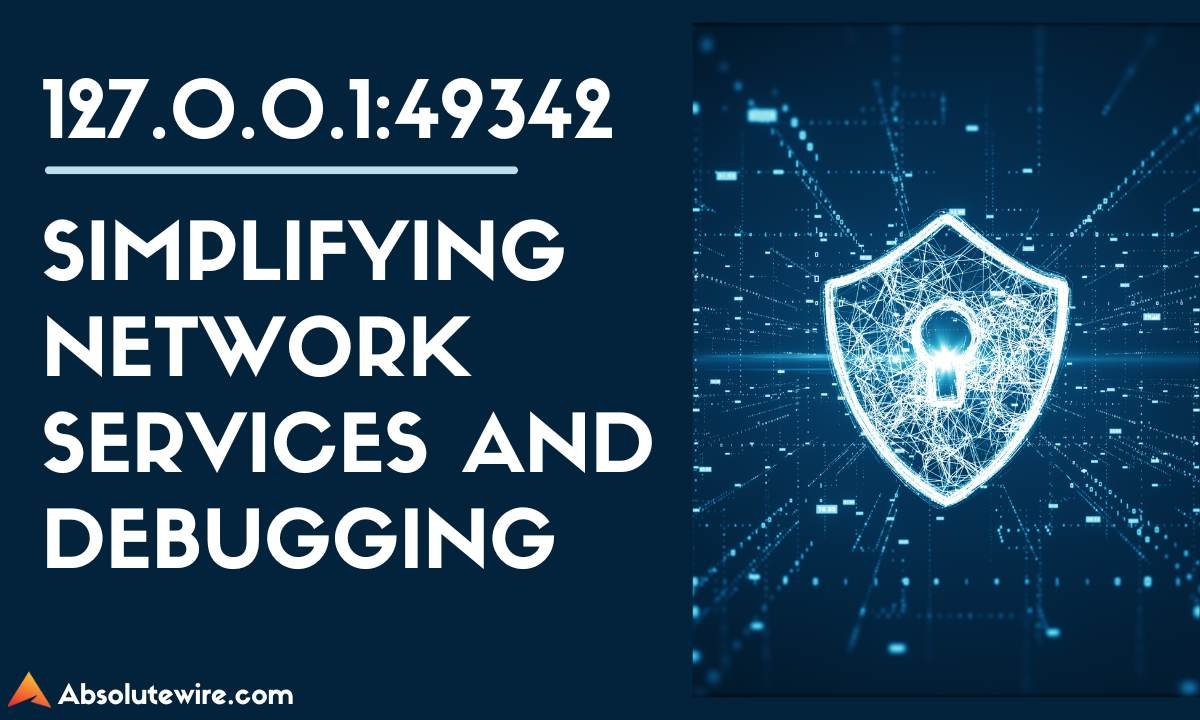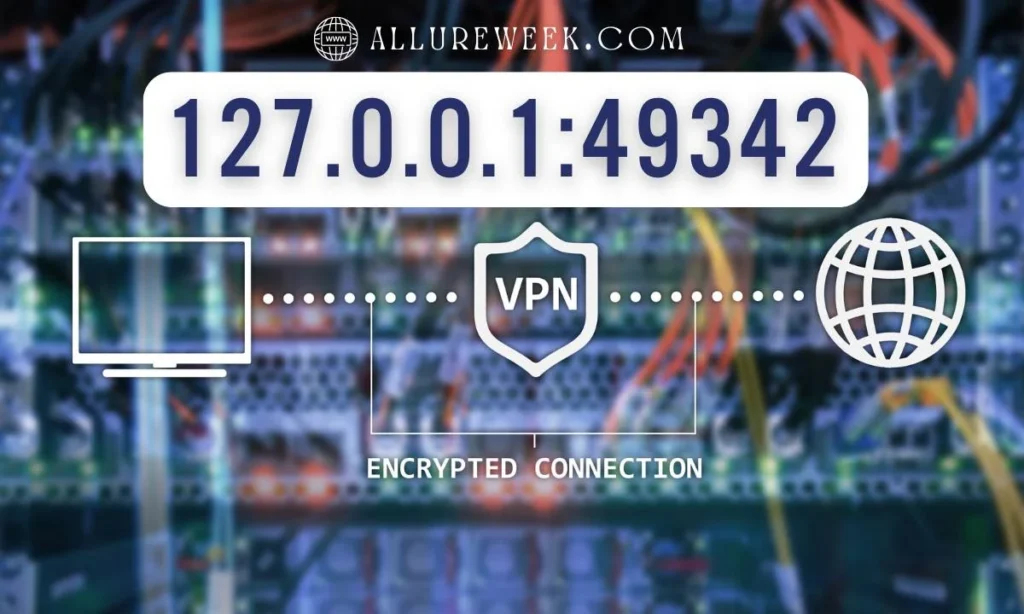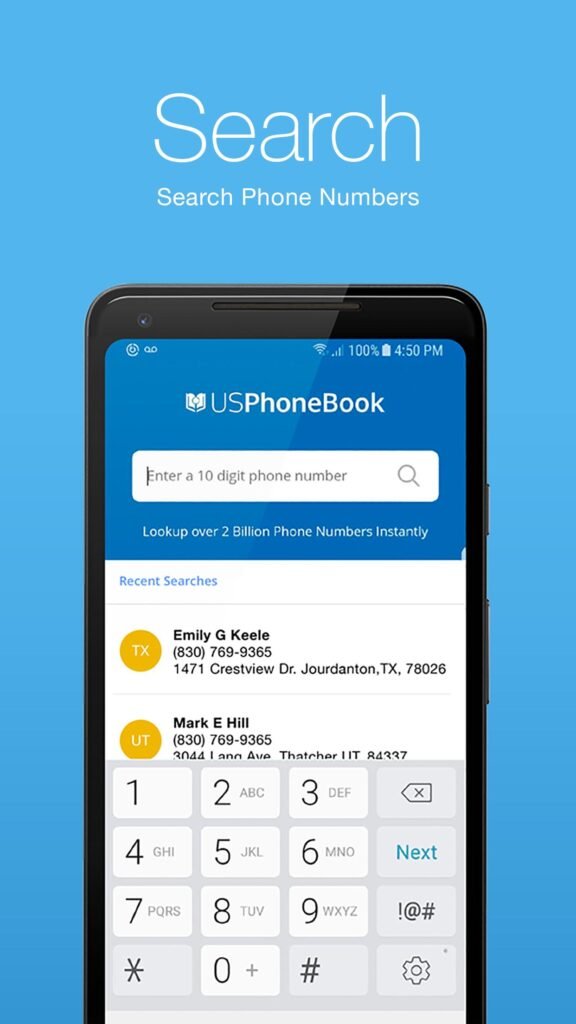Have you ever encountered the mysterious string of numbers and letters that reads 127.0.0.1:49342? If so, you’re not alone. This seemingly innocuous address has sparked curiosity and confusion among many tech enthusiasts and casual users. What does it mean? Is it something to be concerned about, or is it just another digital oddity?
Understanding these technical nuances is more critical than ever as our world becomes increasingly interconnected. Whether you’re a seasoned IT professional or want to navigate their digital space safely, knowing how to decode addresses like 127.0.0.1:49342 can empower you in ways you never thought possible.
Join us as we delve into this intriguing IP address format’s history, misconceptions, and potential risks!
What is 127.0.0.1:49342?

At first glance, 127.0.0.1:49342 might seem like a random jumble of numbers and symbols. In reality, it serves a particular purpose in networking.
The number 127.0.0.1 is known as the “loopback” address, which allows your computer to communicate with itself without needing an external network connection. It’s often used for testing and troubleshooting purposes.
The addition of “49342” refers to a port number associated with that loopback IP address. Ports act as entry points for data on your device, allowing different services and applications to manage incoming and outgoing traffic effectively.
In essence, when you see 127.0.0.1:49342, you’re looking at a local endpoint where software can send or receive data within its environment—an essential aspect of modern computing that keeps everything running smoothly behind the scenes.
The History and Origins of 127.0.0.1:49342

The IP address 127.0.0.1 is the loopback address, part of a reserved block for local communication within a computer system. It allows devices to communicate with themselves without accessing external networks.
Port number 49342 adds another layer to this connection, typically indicating that a specific service or application runs on the device. Each port can handle different types of traffic and requests, making it essential in networking scenarios.
Historically, loopback addresses have existed since the inception of TCP/IP protocols in the early 1980s. They were created to facilitate testing and debugging by enabling developers to ensure their applications functioned correctly before deployment.
Over time, various applications adopted these addresses for internal operations, leading to numerous uses across platforms today. Understanding this history helps demystify what might seem like an obscure numerical sequence.
Misconceptions and Myths about 127.0.0.1:49342

Many people believe that 127.0.0.1:49342 is synonymous with malicious activity or hacking attempts. This misconception arises from the unfamiliarity with local IP addresses and ports.
In reality, 127.0.0.1 refers to the local host, which is a standard address for your computer in networking terms. The port number, such as 49342, identifies a specific service or application running on that machine.
Another myth suggests that encountering this address means your device is infected or compromised. While some malware can use localhost connections to evade detection, legitimate applications often communicate through these channels without any harmful intent.
Understanding these nuances helps demystify what 127.0.0.1:49342 truly represents in the digital landscape rather than fearing it based on misinformation circulating online.
The Importance of Understanding 127.0.0.1:49342 in Today’s Digital World
Understanding 127.0.0.1:49342 is essential in our increasingly digital society.
This address refers to a local host, often used for testing and development purposes. It’s where applications communicate without the need for an internet connection.
Knowing how local addresses function becomes crucial as more individuals and businesses rely on web-based technologies. It can help troubleshoot issues that occur during software development or network configurations.
This address’s misunderstanding can lead to security vulnerabilities if developers overlook its potential risks.
Moreover, as cyber threats grow more sophisticated, recognizing safe versus unsafe communications within local networks aids in maintaining online safety.
Being informed about such technical aspects empowers users and professionals to navigate the digital landscape confidently.
How to Protect Yourself from Potential Risks Associated with 127.0.0.1:49342
You are protecting yourself from potential risks tied to 127.0.0.1:49342, which starts with understanding its context. Always ensure your firewall is active and configured correctly. This adds a crucial layer of security against unauthorized access.
Regular updates are essential as well. Keeping your operating system and software up-to-date helps patch vulnerabilities that malicious actors could exploit.
Be cautious about public networks, too. Avoid accessing sensitive information like passwords or bank details when connecting to Wi-Fi in cafes or airports.
Educating yourself on common cyber threats can also make a difference. Recognizing phishing attempts or suspicious links empowers you to act wisely online.
Consider using virtual private networks (VPNs) for an extra shield of protection when browsing the web, especially if you’re dealing with sensitive tasks related to 127.0.0.1:49342
FAQs
What does 127.0.0.1:49342 represent?
This address indicates a local host connection on port 49342. Developers commonly use it to test applications locally before deployment.
Is 127.0.0.1:49342 safe to use?
Generally, yes! Since it points to your local machine, it’s considered secure for development purposes unless other vulnerabilities exist in the application you are testing.
Can I access services running on 127.0.0.1 from another device?
No, devices outside of your network cannot connect to this address, which is specifically designed for internal communication only.
What should I do if my security software flags 127.0.0.1:49342?
If flagged, check what application is trying to communicate over that port and ensure it’s legitimate software you’re using.
How can I change the port number associated with localhost connections?
When starting the service, you typically can change the default port settings in your application’s configuration file or through command-line options.
Are there any performance issues related to using ports like 49342 with localhost?
Using different ports generally doesn’t lead to performance problems; however, excessive open connections might slow down system resources if not managed properly.




Pingback: Ranking - rankingdream.com
Pingback: Everything You Need to Know About IP 127.0.0.1:49342 - techn9ne.us